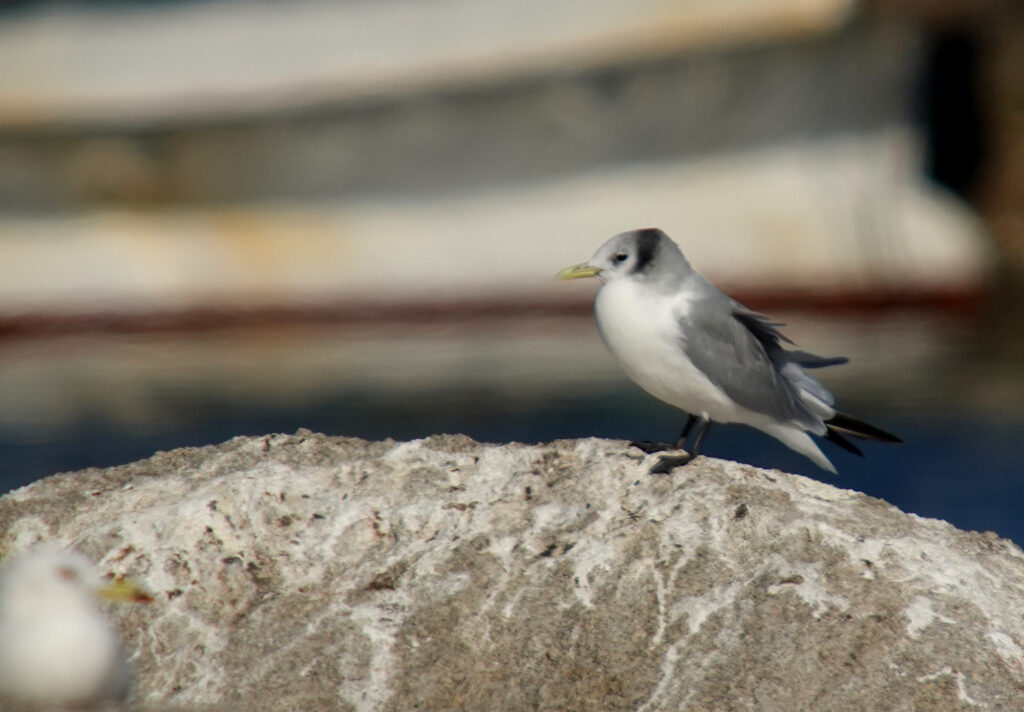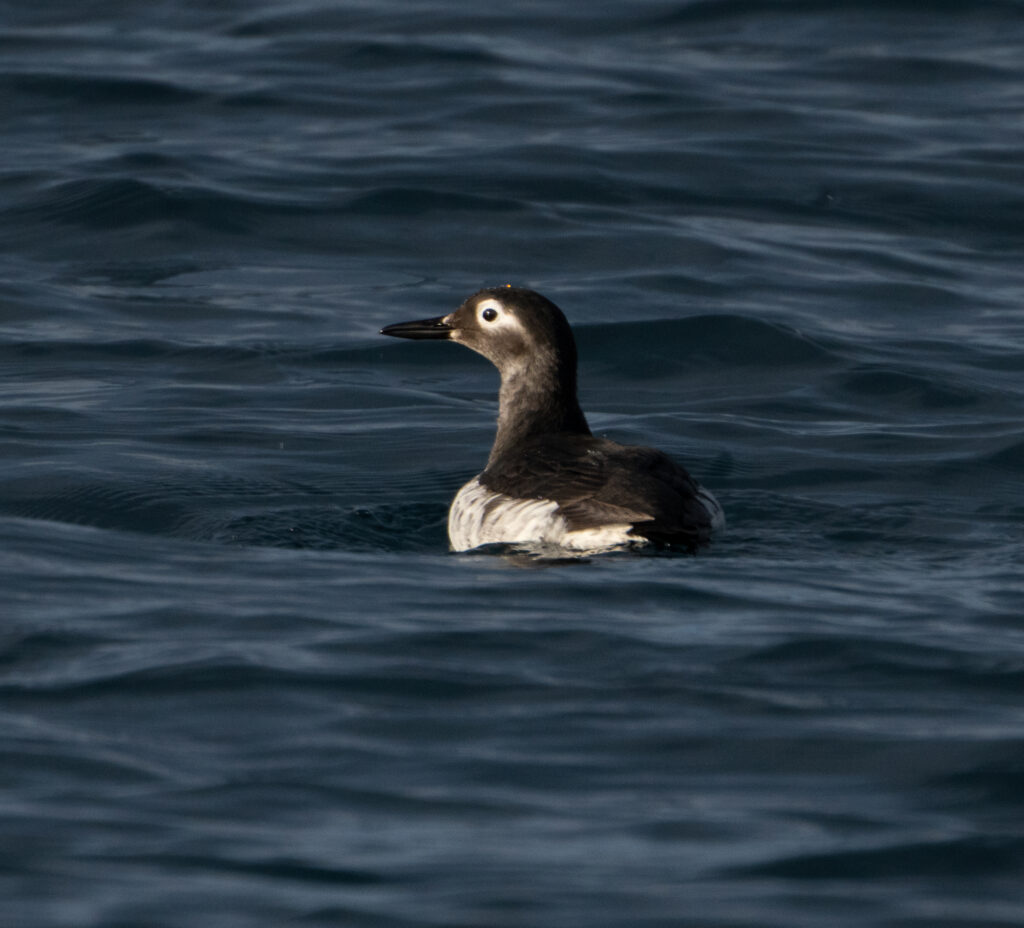Dr Nial Moores, Director, Birds Korea

In 2014, Birds Korea published Status of Birds in which we pioneered an approach to identifying bird conservation priorities in the Republic of Korea (ROK). Combining historical and recent scientific literature and research, we grouped all 365 or so regularly-occurring bird species in the ROK into Red, Amber, Green or Grey categories (corresponding to their rate of likely population change), further subdivided into five major habitat types. One of these five was “Marine”. As stated in our report, “Marine Habitat has an area more than four times greater than all the other main habitats combined. It is also the most poorly-surveyed…with many information gaps remaining, most especially on the distribution and abundance of seabirds at sea. Neither a major review of marine biodiversity by the national Ministry of Maritime Affairs and Fisheries (MOMAF 2006) nor a Yellow Sea review of biodiversity by UNDP-GEF (2007) contain any reference at all to seabirds” (Moores et al. 2014).
There has been some improvement in research of marine habitats since 2014, but many information gaps remain, especially on the distribution and abundance of birds at sea. As we have been arguing since our Blueprint publication in 2010, these information gaps can only reasonably be filled by a much deeper research collaboration between government research bodies, academic institutions and properly funded specialists and NGOs, aiming to answer specific research questions.
Current levels of knowledge and research activity are inadequate to conserve seabirds at sea in Korean waters.
For example, the national Red List for Birds published by NIBR in 2019 assessed the conservation status in the ROK of only three marine dependent species: Globally Least Concern but Nationally Near Threatened Red-necked Grebe Podiceps grisegena 큰논병아리; Globally Near Threatened and Nationally Vulnerable Long-billed Murrelet Brachyramphus perdix 알락쇠오리; and Globally Vulnerable and Nationally Endangered Crested Murrelet Synthliboramphus wumizusume 뿔쇠오리, a local breeder.
None of the three seabird assessments in NIBR (2019) contain population assessments or trend data; and none have maps with resolution or ecological insights sufficient to support conservation planning.

At least as of 2019, there was not even a formal national Red List assessment of e.g., the Critically Endangered Chinese Crested Tern Thalasseus bernsteini 뿔제비갈매기(first found nesting in the ROK in 2016); or of the globally Near Threatened Swinhoe’s Storm Petrel Oceanodroma monorhis 바다제비, even though the ROK supports >90% of the known world breeding population; or of the globally Near Threatened Yellow-billed Loon Gavia adamsii 흰부리아비.
The Yellow-billed Loon has a world population estimated at between 16,000-32,000 individuals (BirdLife International 2024); and a large proportion of the Alaskan-breeding (and Russia-breeding?) population has long been known to winter in and around Korean marine waters (see e.g., Birds Korea 2010, especially pages 68-69 & 138-139). Our research fits well with published studies on Alaskan birds: the species concentrates along the Gangwon coast (peaking perhaps in March); and also winters in the Yellow Sea, with some wintering close to islands and others wintering far offshore.



Thanks to government actions, some seabird breeding colonies are protected; and thanks to some leading researchers, actions to reduce the number of seabirds drowned in nets have also been taken. However, most Korean marine waters remain poorly surveyed, if at all, and unprotected. As such they are likely to be increasingly vulnerable to impacts from the development of offshore wind-farms, fisheries practices and pollution.
Being a small NGO, we have long taken the most practical and proactive approach we can – first aiming to identify and then to assess and promote the values of the most important areas for seabirds at sea. To date, we have identified and “promoted” three main areas off from the east coast which, in our opinion, meet BirdLife International’s criteria for identification as internationally important Marine Bird and Biodiversity Areas – the Gangwon Goseong coast; marine waters off the Guryongpo Peninsula; and the narrow sea strait between the Busan mainland and the Japanese island of Tsushima / Teima Do. For more than a decade, we have been calling for these areas to be looked at as national (and regional) conservation priorities.
We have very limited funding and capacity. Our efforts for the Gangwon Goseong coast – both in the ROK and to a much lesser extent in the DPRK – have only been possible thanks to the highly productive collaboration with the Hanns Seidel Foundation (Korea office). Back in 2017, the HSF, together with Birds Korea, produced a pamphlet on seabirds in Goseong; held an exhibition and seminar in the DMZ Museum; met with local officials; and published a report (largely reproduced in Choi et al. 2019) on our findings.
After a several year gap, again kindly funded by and in full collaboration with the HSF (Korea office), we were able to survey the ROK Gangwon Goseong coast properly again in early December 2023, and mid-January 2024. This time our survey work was joined by Birds Korea member Mr Kim Eojin, who -in alignment with our our conservation aims – wanted to capture some of the beauty and importance of this area to show on his very popular 새덕후 You Tube channel. His love for birds shines through all of his videos – helping to generate a national boom in people getting into birds.
Our recent surveys there, as in earlier years, consisted of three main methods (led in very large part by the same observers), allowing comparisons to be made between months and years:
1) Counts (using binoculars) of all birds conducted from a rented fishing boat, “directed” by NM (on December 4th and 5th; and again on January 16th and 17th), divided into ten-minute transects, with counts starting c. 1.5km out from the harbour;

2) Counts of flying birds using tripod-mounted telescopes from an elevated fixed point position in the January Pension, Daejin, for 15 minutes before sunrise and for 95 minutes after sunrise, followed by a 10-15 minute count of birds on the water.
and
(3) counts along the coast from pre-selected points of all birds, again using tripod-mounted telescopes.
During these recent counts, Dr Bernhard Seliger (BS) and Baek Minjae (BM) were responsible for all counts of cormorants (December and January); Dr Ha Jungmoon counted gulls and some ducks (December); and NM counted all other bird species (December and January).
In early December 2023, we counted 38,848 seabirds – including very large numbers of Rhinoceros Auklet and Ancient Murrelet, and at least two Long-billed Murrelet, with perhaps a few more overlooked in amongst the mass of murrelets and the intense glare experienced during the December boat surveys. Probably four species were counted in internationally important concentrations of 1% or more of their population.

In January 2024, we counted only 7,622 seabirds of 29 species, three of which were found in internationally important concentrations of 1%. A staggering 21 species, however, were recorded in numbers that exceeded 1% of the national mean of population as recorded by the Ministry of Environment (MOEK) Winter Bird Census. Examples include Harlequin Duck Histrionicus histrionicus 흰줄박이오리, with the 97 counted being more than double the MOEK Census 10-year national mean of 40; and Red-necked Grebe 큰논병아리, with the 450 counted more than ten times the MOEK Census 10-year national mean of only 34… Clearly, many seabird species are still being massively overlooked by government-organised research, even now.

The total number of seabirds we counted in January 2024 along the Gangwon Goseong coast compares very poorly with our counts along the exact same stretch of coast in mid-January 2016 and 2017, when we counted 26,395 and 36,499 seabirds respectively. Major differences between counts / years, included the much lower numbers of gulls in January 2024 than in either January 2016 or 2017.
In addition to our generating more count data, happily Mr Kim Eojin did manage to collect some excellent footage during the boat surveys: both of birds and also of threat that poorly-set nets can still pose to seabirds.





The 새덕후 You Tube video by Mr Kim Eojin was posted on January 25th here . Please be ready for an emotional boat ride…
References
BirdLife International (2024) Species factsheet: Gavia adamsii. Downloaded from http://datazone.birdlife.org/species/factsheet/yellow-billed-loon-gavia-adamsii on 29/01/2024.
Birds Korea. 2010. The Birds Korea 2010 Blueprint for the conservation of the avian biodiversity of the South Korean part of the Yellow Sea. Published by Birds Korea, Busan.
MOEK. 1999-2023. Winter Bird Census. Data accessed through database at: https://www.andreas-kim.de/MoE/MoE.html
Moores, N., Kim, A. & Kim R-H. 2014. Birds Korea report on Bird Population Trends and Conservation Status in the Republic of Korea. Published by Birds Korea, Busan, September 2014.





